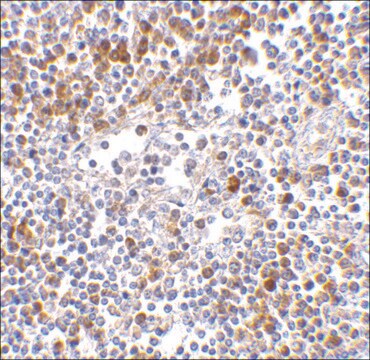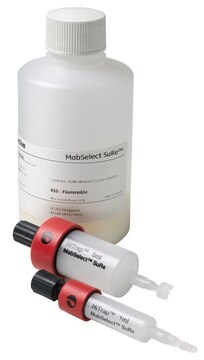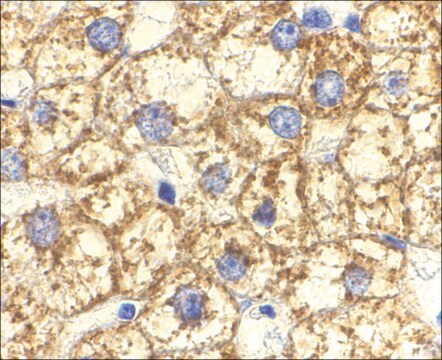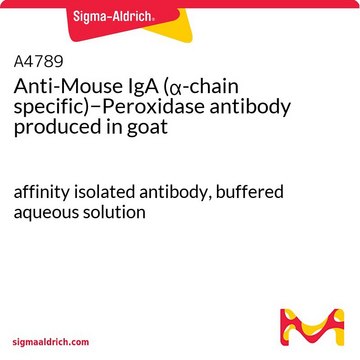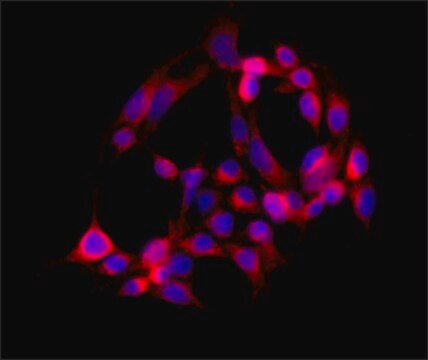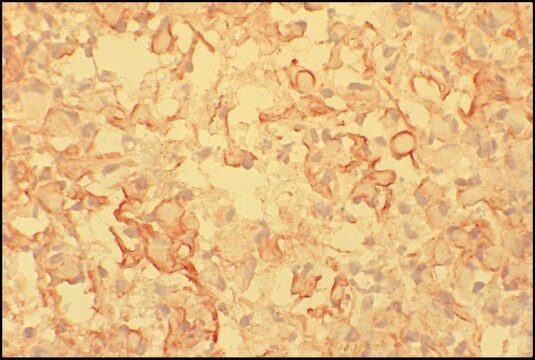SAB4200125
Anti-Notch3 antibody, Rat monoclonal
purified from hybridoma cell culture
Synonym(s):
Anti-CADASIL, Anti-CASIL, Monoclonal Anti-Notch3 antibody produced in rat
About This Item
Recommended Products
biological source
rat
conjugate
unconjugated
antibody form
purified from hybridoma cell culture
antibody product type
primary antibodies
clone
monoclonal
form
buffered aqueous solution
mol wt
antigen ~270 kDa
species reactivity
rat, human
packaging
antibody small pack of 25 μL
technique(s)
western blot: 2-4 μg/mL using using Jurkat cell extracts
isotype
IgG2a
UniProt accession no.
shipped in
dry ice
storage temp.
−20°C
target post-translational modification
unmodified
Gene Information
human ... NOTCH3(4854)
rat ... Notch3(56761)
General description
Members of the Notch gene family encode transmembrane receptors. Mammals have four Notch receptors, Notch1 through Notch4. Notch1 and Notch2 have the highest homology with each other, whereas Notch3 and Notch4 are structurally divergent, lacking the transactivation domain that is found in Notch1 and Notch2. The Notch3 receptor possesses 34 extracellular epidermal growth factor (EGF)-like repeats and three cysteine-rich Notch/LIN12 repeats (LIN). It also contains two protein-protein interaction domains, the RAM domain (R), two nuclear localization signals (NLS), six ankyrin (ANK) repeats and a PEST sequence (P) at its cytoplasmic portion. The NOTCH3 gene is mapped to human chromosome 19p13.12.
Specificity
Immunogen
Application
Biochem/physiol Actions
Physical form
Storage and Stability
Disclaimer
Not finding the right product?
Try our Product Selector Tool.
Storage Class Code
10 - Combustible liquids
Flash Point(F)
Not applicable
Flash Point(C)
Not applicable
Certificates of Analysis (COA)
Search for Certificates of Analysis (COA) by entering the products Lot/Batch Number. Lot and Batch Numbers can be found on a product’s label following the words ‘Lot’ or ‘Batch’.
Already Own This Product?
Find documentation for the products that you have recently purchased in the Document Library.
Our team of scientists has experience in all areas of research including Life Science, Material Science, Chemical Synthesis, Chromatography, Analytical and many others.
Contact Technical Service
